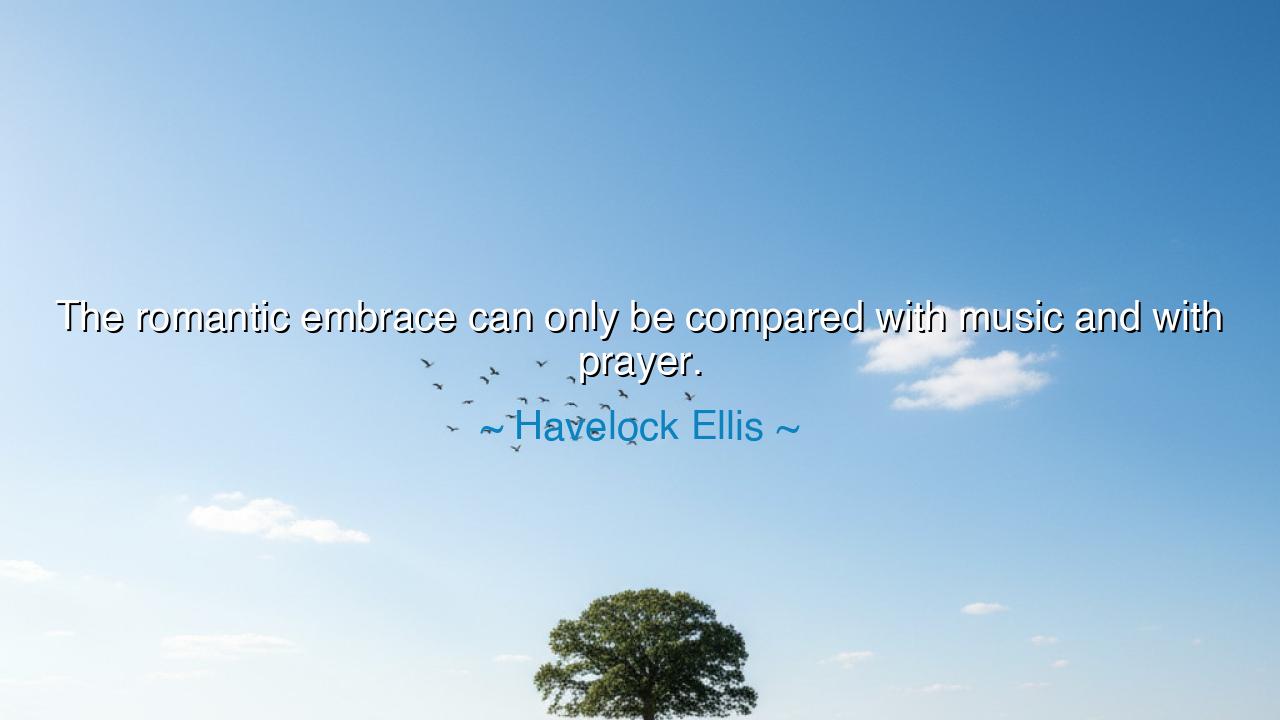
The romantic embrace can only be compared with music and with






The words of Havelock Ellis rise with a timeless resonance: “The romantic embrace can only be compared with music and with prayer.” In this vision, he binds together three of the most sacred acts known to humanity—love, song, and devotion. The romantic embrace, he tells us, is no mere mingling of flesh; it is a moment where the soul ascends, where the heart sings without words, where the spirit bows in reverence. For in such an embrace, two human beings transcend themselves, as though touched by the divine.
The ancients would have honored this comparison. Music was never to them mere entertainment—it was harmony made flesh, the audible echo of the cosmos. Likewise, prayer was not a muttering of words but a bridge between mortal and immortal, a dialogue with the divine. Ellis declares that the romantic embrace belongs in this exalted company. It is rhythm like music, breathing like song, silence like prayer. In it, two beings find a unity that cannot be spoken, only felt, as if the gods themselves had woven their spirits together.
History gives us proof of this truth. Recall the tale of Abelard and Heloise, whose forbidden love in medieval France was written not only in letters but in a language that mingled passion and devotion. Their letters read like hymns, their love like an eternal chant. In their meeting, in their secret embraces, there was both music and prayer: a symphony of longing, and the sacred hush of devotion that saw love itself as a kind of altar. For such is the nature of true romance—it carries both the joy of the lyre and the silence of the temple.
There is also wisdom in Ellis’s choice of comparisons. Music and prayer are experiences that move beyond reason, beyond calculation. One does not explain music; one is carried by it. One does not analyze prayer; one surrenders to it. So too with the embrace of romance: it is not weighed or dissected, but felt, and in feeling it, the lovers are lifted into mystery. It is at once sensual and spiritual, fleeting yet eternal, mortal yet touched by something infinite.
Yet, Ellis also gives us a reminder: such an embrace is rare and precious. Not every touch carries the weight of music, not every embrace is a prayer. Only when love is true, when hearts meet without guile, when the soul yields fully to another, does the romantic embrace rise into this holy sphere. It is not to be squandered or taken lightly, for to desecrate such a moment is to mock both the song of the heavens and the silence of the divine.
The lesson is clear: treat love’s embraces with reverence. Do not let them be careless or empty, but let them carry the weight of devotion and the rhythm of beauty. When you hold another, let it be as though you are listening to a sacred melody or offering a prayer to the divine. For then you will discover that love itself is not only passion, but worship—the recognition of the sacred spark in another soul.
Therefore, let all who hear take action: seek love that is worthy of music and prayer. Let your embraces not be shallow gestures but holy encounters, where the soul meets the soul and silence sings. Remember that every true embrace is both a hymn and a prayer, and that in such moments, you stand at the threshold of eternity.
Thus the wisdom of Havelock Ellis endures, teaching us that the romantic embrace is no mere indulgence, but a sacrament of love. It is the music of the heart and the prayer of the soul, woven together in the meeting of two beings who, for one timeless moment, become more than themselves.






AAdministratorAdministrator
Welcome, honored guests. Please leave a comment, we will respond soon